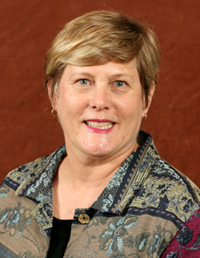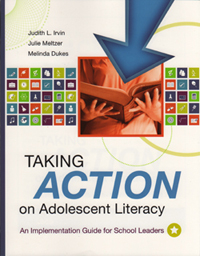
Florida State University education researcher Judith Irvin is working to address an urgent problem in the United States.
“Adolescent literacy is a huge problem in our country,” said Irvin, a professor of educational leadership and policy studies in FSU’s College of Education. “Right now there are something like 6 million students who are reading or writing below grade level and not acquiring the skills that they will need after they graduate, or even to compete in school.”
Irvin’s prescription for fixing the problem is contained in a framework she has written, titled “A Leadership Model for Improving Adolescent Literacy.” It was published last summer in the book, “Taking Action on Adolescent Literacy: An Implementation Guide for School Leaders,” which Irvin cowrote with Julie Meltzer of the Public Consulting Group’s Center for Resource Management Inc. in Portsmouth, N.H., and Melinda S. Dukes, a doctoral candidate in FSU’s Department of Educational Leadership and Policy Studies.
 “There is a crying need for improving adolescent literacy, especially in middle and high schools in the United States,” Irvin said of their reason for writing the book.
“There is a crying need for improving adolescent literacy, especially in middle and high schools in the United States,” Irvin said of their reason for writing the book.
While the goal is to create a higher rate of literacy among middle and high school-age students, “literacy” is a broadly defined term. It includes reading, writing, speaking, presenting and thinking—but Irvin says literacy needs to include so much more.
“When you think about what kids need for a very technological world, many of the jobs that they will be competing for haven’t even been defined yet,” she said. “And so we are also looking at 21st-century skills in terms of the technology that they need. It’s not only just reading from a textbook. It’s also the Internet, the media and communication skills that they need to be successful as college students, as citizens, or in life in general.”
Here is how Irvin’s model works:
“Picture a bull’s-eye,” she said. “The center of this bull’s-eye is student motivation, engagement and achievement. That is, of course, where we are targeting our efforts.”
Around the outside of that bull’s-eye, Irvin says, leaders must integrate literacy into everyday learning.

“And that’s where literacy happens for kids,” she said. “It happens in every single-content-area classroom. It also happens for some kids as they experience literacy interventions—kids who are reading and writing below grade level.”
The last piece to the puzzle is sustaining the effort—and this happens best through a combination at school, at home, in the community and with coordination with the school district.
Irvin’s adolescent literacy model recently was accepted by the organization New Leaders for New Schools (NLNS), an alternative certification initiative for the preparation of school leaders. NLNS works with leadership preparation in eight urban centers: the San Francisco Bay area; New Orleans; Memphis, Tenn.; Chicago; Milwaukee; New York City; Baltimore; Prince George’s County, Md.; and Washington, D.C. The organization has adopted Irvin’s framework as its guiding model for the literacy portion of leader preparation for its upcoming class of prospective middle and high school principals.
Gary Crow, department chair of FSU’s Department of Educational Leadership and Policy Studies, described NLNS as “one of the most talked-about alternative leadership preparation programs in the country. It is a major accomplishment for Judith’s framework to be adopted by this organization.”
Irvin’s literacy model represents the culmination of two decades of research and development. Two additional aspects of her work are forthcoming: A new book titled “Critical Issues in Adolescent Literacy: Solutions for Literacy Leaders” will be published in the fall, and a “Toolkit for Literacy Leaders,” currently being tested, will enable school and district leaders to develop, implement and monitor their literacy improvement plans.
“It is very gratifying to me for an organization as prestigious and important as New Leaders for New Schools to accept our model for their literacy improvement in secondary schools in large urban centers,” Irvin said. “I am beginning to see the impact of our work in schools across the country.”
This story is also available as an FSU Radio Headlines program, http://www.fsu.com/radio/.




